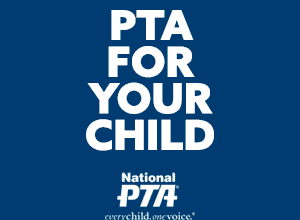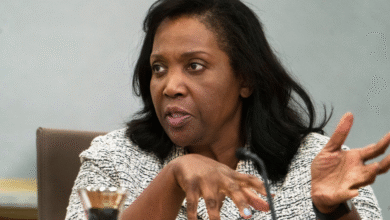NPR PBS Funding Cuts: CEOs Challenge Trump’s Decision

NPR and PBS funding cuts have emerged as a polarizing issue, drawing significant attention from both media leaders and the public alike. As President Trump’s administration moves forward with proposed reductions in public funding, the CEOs of both organizations are stepping up to challenge these decisions. During a recent interview on CBS’s “Face the Nation,” NPR CEO Katherine Maher expressed concern about the detrimental effects on local news coverage and critical children’s programming. With around 20% of Americans already lacking access to vital news sources, the implications for rural communities are particularly alarming. This situation raises pressing questions about the future of independent journalism and educational content that millions depend on.
The potential reduction in government support for public media resources has sparked a broader dialogue regarding the sustainability of quality news and educational programming. Leaders at NPR and PBS are rallying against drastic funding cuts initiated by the Trump administration, which could severely compromise local news access, particularly in underserved areas. As authorities address these budgetary concerns, there is an urgent call for innovative strategies to maintain essential services that promote informative content and support early childhood education initiatives. The dialogue underscores a pivotal moment for public broadcasting and invites discussions about its role in safeguarding community engagement and continuity.
The Challenge Against Trump’s Public Funding Cuts
In a bold response to President Trump’s executive order targeting public funding for NPR and PBS, the respective CEOs have taken a stand. NPR CEO Katherine Maher expressed her organization’s commitment to exploring legal options to challenge these funding cuts. This decision indicates the high stakes for public broadcasting, which plays a vital role in delivering news and educational content to millions of Americans. By questioning the legality and rationale behind these cuts, NPR and PBS are attempting to safeguard their operational integrity.
PBS CEO Paula Kerger also revealed that the cuts could have dire consequences for local news stations, especially in underserved areas. With many rural communities relying on NPR and PBS for news, the cuts pose a significant threat to their media landscape. Both executives agree that losing public funding will not only impact news dissemination but also diminish the quality and variety of children’s programming, which has been a pillar of educational content offered by these organizations.
Impact on Local News and Media Access
As local newsrooms across the country grapple with declining revenue, the potential cuts to NPR and PBS funding raise alarms about the future of journalism in America. Many smaller stations, particularly in rural areas, depend heavily on public funding, with some receiving up to half of their budget from these sources. The loss of such financial support could render these stations incapable of providing consistent and reliable content, thereby contributing to the growing issue of news deserts where communities are left uninformed.
Furthermore, the erosion of local media coverage could hinder civic engagement and participation in community affairs. With nearly 20% of Americans lacking access to local news as highlighted by Maher, the influential role public broadcasting plays in nurturing informed citizens cannot be exaggerated. If these cuts go through, rural communities might struggle even more to access critical information, putting them at a disadvantage in staying engaged with national and local issues.
NPR and PBS: Lifelines for Educational Programming
The debate surrounding public funding cuts not only affects news organizations but also has critical ramifications for children’s programming. As PBS CEO Paula Kerger emphasized, many educational programs, like ‘Sesame Street,’ are heavily supported by federal funding. This funding is crucial, especially considering that half of the children in the U.S. are not enrolled in formal pre-K education. Breaking the link between public dollars and educational programming could stall creative learning initiatives and deprive various developmental resources for young audiences.
Without informed investment from the Department of Education and federal support, many beloved children’s shows risk extinction. The loss of such programming would hinder development opportunities for countless children who benefit from accessible and educational content. Furthermore, discouraged funding could jeopardize partnerships with educational initiatives, which are paramount for improving early learning experiences across diverse socioeconomic backgrounds.
Funding Cuts and the Future of Public Broadcasting
The potential ramifications of Trump’s public funding cuts extend far beyond immediate financial losses; they threaten the future of public broadcasting as a whole. NPR and PBS play essential roles in fostering diverse voices and providing platforms for marginalized communities. Without federal support, the spectrum of perspectives offered through public broadcasting could be narrowed, leading to a homogenized media landscape that fails to represent the richness of American society.
Challenges facing NPR and PBS will also reverberate through the broader media ecosystem, prompting concerns about how local stories will be told and how future generations will consume news. With an environment rich in disinformation, the need for credible sources is paramount. As both organizations prepare to challenge the cuts, their commitment highlights the struggle to maintain public broadcasting’s integrity and relevance in a rapidly changing media landscape.
Public Sentiment towards Funding Cuts
Public sentiment plays a crucial role in shaping the conversation around funding cuts to organizations like NPR and PBS. Many listeners and viewers express a deep appreciation for the quality journalism and educational programming provided by public media. This support underscores the importance of maintaining accessible news resources that serve the public interest over profit motives, particularly in an era where misinformation is rampant.
Surveys often reveal that a significant portion of the American population values public broadcasting as a trusted source of information. The backlash against proposed cuts indicates citizens’ recognition of the essential role NPR and PBS play in fostering informed communities. Advocates for public media are organizing campaigns, gathering petitions, and mobilizing grassroots efforts to ensure their voices are heard in response to funding threats.
Legal Avenues for NPR and PBS
As NPR and PBS strategize their response to the looming funding cuts, the pursuit of legal action represents a viable avenue to protect public broadcasting. Legal experts and advocacy groups may help guide these organizations in navigating the complexities of federal funding laws and possible constitutional challenges. This could lead to significant precedents regarding government support for public media and ultimately enable these organizations to continue serving communities across America.
Moreover, pursuing legal avenues can shed light on the broader implications of defunding public services. The resulting discourse could increase public awareness around the role that government funding plays in sustaining crucial institutions like NPR and PBS. By fighting back against these cuts, NPR and PBS not only seek to protect their financial lifelines but also aim to galvanize public support and bolster the defense of future public broadcasting initiatives.
Advocacy Groups Rallying for Public Media
Groups advocating for public media are mobilizing in response to the proposed funding cuts to NPR and PBS. Numerous organizations are calling for public demonstrations, awareness campaigns, and digital advocacy to highlight the value these institutions bring to American culture and community discourse. Activists emphasize the relationship between public funding and quality content, urging members of the public to advocate for the preservation of this vital resource.
The collective efforts of these advocacy groups aim to not only save funding for NPR and PBS but to foster a broader appreciation for quality journalism and educational programming across all media formats. By leveraging social media platforms and engaging in community outreach, these organizations strive to ensure that both lawmakers and the public recognize the critical need for sustained support of public broadcasting.
Impact on Educational Partnerships and Initiatives
The proposed cuts to NPR and PBS funding could significantly disrupt existing educational partnerships and initiatives. Many local educational programs rely on the collaborative efforts between public broadcasting and schools to deliver enriching content to students. By withdrawing federal funding, these partnerships may falter, leaving educators without essential resources to support their teaching objectives.
As public broadcasting is known for its commitment to enhancing educational outcomes, losing this support could stall the development of innovative learning programs that have benefited children across the country. The implications of diminished funding could extend beyond the classroom, affecting community programs aimed at fostering early childhood education and literacy initiatives. Therefore, maintaining federal support is essential to protect the educational landscape and ensure that every child has access to quality learning opportunities.
Economic Implications for Local Stations
The financial implications of Trump’s public funding cuts resonate throughout local stations that depend on federal dollars for their operations. For many small community stations, a substantial portion of their budget is derived from public funds, making them vulnerable in the face of budgetary constraints. This precarious financial situation could result in layoffs, reduced programming, and even station closures in communities that most need reliable news sources.
As these economic pressures mount, local journalism faces significant risks, with many independent newsrooms struggling to survive in a competitive media landscape. Cuts to NPR and PBS funding would exacerbate the crisis in local journalism, leading to decreased reporting capacity and less coverage of community issues. In this context, the future of local news depends on safeguarding federal support for public broadcasting, ensuring that these stations are equipped to inform and engage their communities.
Frequently Asked Questions
What impact do NPR PBS funding cuts have on local news coverage?
The NPR PBS funding cuts proposed by the Trump administration could severely impact local news coverage, particularly in rural areas where community stations rely heavily on public funding. Local stations could face operational challenges, leading to reduced news reporting and fewer resources devoted to covering local issues, ultimately creating news deserts in these underserved communities.
How would Trump’s public funding cuts affect children’s programming on PBS?
The proposed cuts to NPR PBS funding threaten the future of children’s programming on PBS. As PBS CEO Paula Kerger noted, federal funding is crucial for educational shows like ‘Sesame Street’ and ‘Mister Rogers’ Neighborhood.’ Without these funds, the production and availability of quality programming for children could be compromised, impacting early childhood education and development.
Why are rural communities concerned about NPR PBS funding cuts?
Rural communities are particularly concerned about NPR PBS funding cuts because they already have limited access to news sources. According to NPR, 20% of Americans in rural areas lack reliable local news. The loss of public funding could exacerbate this issue, leading to greater information gaps and hindering the ability of these communities to stay informed about local issues.
What options are NPR and PBS considering in response to funding cuts?
In response to Trump’s public funding cuts, NPR and PBS are exploring various options to safeguard their operations. Both organizations have expressed their commitment to legally challenge these cuts and are considering alternative funding sources and partnerships to sustain their services, especially those that cater to local news and children’s programming.
What percentage of budget do some community PBS stations derive from public funding?
According to PBS CEO Paula Kerger, some small community PBS stations derive as much as 40%-50% of their budget from public funding. This reliance on federal support makes these stations particularly vulnerable to cuts, which could threaten their sustainability and ability to provide services to the community.
How could NPR PBS funding cuts impact educational programming partnerships?
The NPR PBS funding cuts could endanger educational programming partnerships that rely on federal support, jeopardizing initiatives that provide essential educational content for children. For instance, funding from the Department of Education has historically supported popular educational shows, and a loss in this funding might stall developmental activities and significantly limit educational resources available to preschool providers.
| Key Point | Details |
|---|---|
| Impact of Funding Cuts | Trump’s executive order threatens public funding for NPR and PBS, particularly affecting rural communities and local news access. |
| Responses from CEOs | NPR CEO Katherine Maher and PBS CEO Paula Kerger are looking for available options to challenge these cuts. |
| Effects on Children’s Programming | Cuts may jeopardize educational show funding, impacting classic programs like ‘Sesame Street’. |
| Local Station Dependency | Small community stations may rely on federal funds for 40%-50% of their budgets, making them vulnerable. |
Summary
NPR PBS funding cuts are set to pose a significant threat to the future of public broadcasting. The decision by President Trump to withdraw funding could disrupt the crucial services that NPR and PBS provide, especially in underserved rural areas where access to reliable news is already limited. Both organizations are dedicated to fighting against these cuts and safeguarding educational programs, which are essential for young audiences and community engagement.




